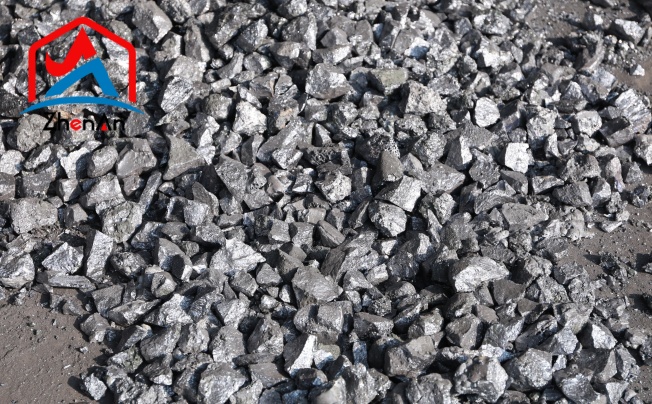Overview of Manganese
Manganese, a transition metal denoted by the symbol Mn and atomic number 25, possesses a captivating allure due to its unique blend of physical and chemical properties. One of the most notable features of manganese is its silvery-gray appearance, which can tarnish into a brown color upon exposure to air. With a melting point of 1,246 degrees Celsius and boiling point of 2,061 degrees Celsius, manganese showcases robust physical characteristics ideal for various industrial applications.
A Chemical SymphonyIn terms of chemical properties, manganese exhibits an intriguing array of oxidation states ranging from -3 to +7. This diversity renders it versatile in forming compounds with elements across the periodic table.
Notably, manganese's ability to form complex oxides contributes to its significance in catalysis, particularly in environmental remediation processes. Additionally, manganese's reactivity with acids distinguishes it as a valuable component in chemical synthesis and metallurgical operations.
Despite comprising merely 0.1% of the Earth's crust by mass, manganese occurs widely throughout geological formations globally. The primary ores containing manganese include pyrolusite (MnO2), rhodochrosite (MnCO3), and hausmannite (Mn2O4). These ore deposits are commonly found in sedimentary rocks but can also manifest in hydrothermal veins and metamorphic environments.
Manganese, though not as widely recognized as metals like iron or copper, holds a significant presence in the Earth's crust. When comparing its abundance to other elements, manganese ranks around 12th in terms of prevalence.
This places it ahead of more commonly known metals, such as lead and zinc but falls behind elements like aluminum and silicon. Despite its lower profile compared to these metals, manganese's unique properties and applications make it a valuable resource that plays a crucial role in various industries.
Industrial Applications
Steel Production
Manganese plays a crucial role in steel production as an essential alloying agent. When added to steel, manganese helps improve the strength, hardness, and durability of the metal. Manganese steel, also known as Hadfield steel, is a form of high-manganese steel that is particularly resistant to abrasion and impact.
This makes it ideal for use in applications where toughness and wear resistance are paramount, such as in the construction of rail tracks, rock-crushing machines, and excavator buckets. The addition of manganese to steel also enhances its weldability and work-hardening properties, further contributing to its versatility.
Batteries and Electronics Manufacturing
In the realm of batteries and electronics manufacturing, manganese finds extensive use in the production of lithium-ion batteries. Manganese compounds are utilized as cathode materials due to their ability to store and release electrical energy efficiently.
These batteries are commonly employed in portable electronic devices like smartphones and laptops, as well as electric vehicles. The incorporation of manganese into battery technology not only enhances performance but also promotes sustainability by reducing reliance on traditional fossil fuels.
Agriculture and Soil Enrichment
Beyond industrial applications, manganese plays a vital role in agriculture by serving as an essential micronutrient for plants. Manganese is a key component of various enzymes involved in photosynthesis, nitrogen metabolism, and antioxidant defence mechanisms within plants. Deficiencies in soil manganese can lead to reduced crop yields and poor plant health.
Therefore, farmers often supplement their soils with manganese fertilizers to ensure proper plant growth. By enriching soils with manganese, agricultural practices can promote sustainable cultivation methods that support healthy crop production while minimizing environmental impact.
Environmental Significance
The environmental significance of manganese extends beyond industrial applications into the realm of carbon sequestration. Manganese oxides present in soil play a crucial role in carbon cycling by facilitating the oxidation of organic matter derived from plant residues.
This process helps trap carbon dioxide from the atmosphere within soil aggregates through mineral stabilization mechanisms. By promoting carbon sequestration through natural processes involving manganese compounds, ecosystems contribute to mitigating climate change effects by reducing greenhouse gas emissions.
Impact on Marine Ecosystems
Manganese's influence on marine ecosystems encompasses diverse roles, ranging from nutrient cycling to biological productivity regulation. In oceanic environments, dissolved manganese serves as a micronutrient essential for phytoplankton growth—a critical component of marine food webs.
Additionally, manganese nodules found on seabeds represent valuable mineral resources that support unique deep-sea habitats hosting distinct biodiversity hotspots. However, human activities such as deep-sea mining pose potential threats to these ecosystems by disrupting fragile balance points maintained by naturally occurring concentrations of marine manganese resources.
Future Outlook
The future outlook for manganese is promising, with ongoing research driving pioneering innovations in its utilization across various industries. Scientists and engineers are exploring novel applications of manganese, such as its use in advanced energy storage systems like next-generation batteries and supercapacitors.
By leveraging the unique properties of manganese, including its high energy density and stability, researchers are pushing the boundaries of technology to develop more efficient and sustainable solutions. Furthermore, interdisciplinary collaborations are fostering cutting-edge research that integrates manganese into diverse fields, from materials science to environmental engineering.
Potential for Increased Demand
As global industrialization continues to expand and technologies evolve, the demand for manganese is anticipated to rise significantly in the coming years. The automotive sector alone is projected to drive a surge in demand for manganese-based batteries due to the electrification trend sweeping through the transportation industry.
Additionally, emerging markets in developing countries are increasingly adopting manganese-intensive infrastructures for construction and manufacturing purposes. This growing demand presents both opportunities and challenges for stakeholders in the manganese supply chain, necessitating strategic planning to ensure a sustainable balance between supply and demand.
Scarcity Concerns
Despite being abundant in the Earth's crust, concerns about scarcity linger within the realm of manganese due to factors such as geopolitical tensions impacting mining activities and environmental regulations affecting extraction practices. As industries strive to meet escalating demands while maintaining ethical sourcing practices and environmental stewardship, there is a pressing need for proactive resource management strategies.
Stakeholders must emphasize sustainable mining practices, recycling initiatives, and efficient utilization techniques to mitigate potential scarcity risks associated with this vital metal. By fostering responsible stewardship of manganese resources on a global scale, we can safeguard its availability for future generations while minimizing ecological impacts.






